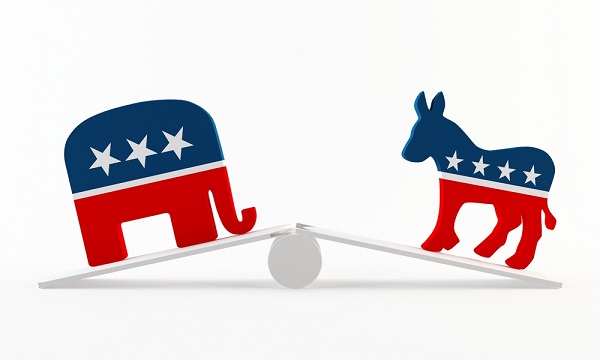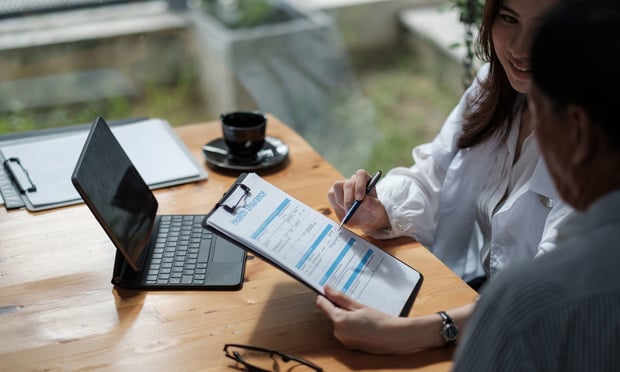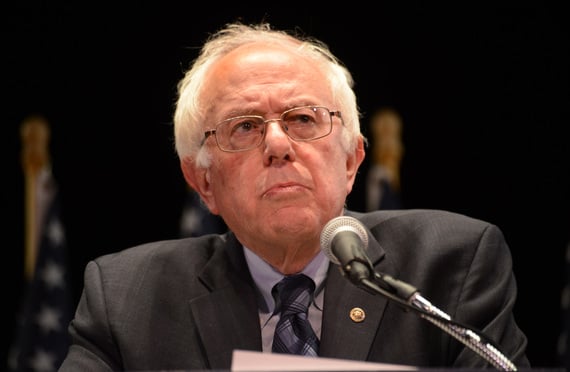 TopDemocrats, including presumptive presidential nominee Joe Biden,have called for better worker protections, while GOP leaders havecalled for stronger employer protections. (Photo:Shutterstock)
TopDemocrats, including presumptive presidential nominee Joe Biden,have called for better worker protections, while GOP leaders havecalled for stronger employer protections. (Photo:Shutterstock)
Congressional leaders are squaring off over the next pandemicrelief bill in a debate over whom Congress should step up toprotect: front-line workers seeking more safeguards from theravages of COVID-19 or beleaguered employers seeking relief fromlawsuits.
|Democrats want to enact an emergency standard meant to bolsteraccess to protective gear for health care and other workers and tobar employers from retaliating against them for airing safetyconcerns.
|Republicans seek immunity for employers from lawsuits related tothe pandemic, an effort they say would give businesses theconfidence to return to normal. The Senate is scheduled toreconvene later this month.
|Related: Judge orders McDonald's to improve COVID-19protections
|The debate reflects a deepening schism between the majorpolitical parties, with Democrats focused on protecting lives andRepublicans focused on protecting livelihoods.
|Democratic House Speaker Nancy Pelosi expressed frustration overefforts to pass an emergency worker-protection standard, whichkeeps running into GOP resistance.
|"They're saying 'Let's give immunity — no liability — foremployers,'" Pelosi said. "We're saying the best protection for theemployer is to protect the workers."
|Nearly 98,000 health care workers have contracted the novelcoronavirus, according to Centers for Disease Control andPrevention data that the agency acknowledges is an undercount. KHNand The Guardian have identified more than 780 who have died andhave told the personal stories of 139 of them.
|In May, the House passed a $3 trillion relief bill that would require the Occupational Safety andHealth Administration to put in place an emergency standard thatwould call on employers to create a plan based, in part, on CDC orOSHA guidance to protect workers from COVID-19.
|It would cover health care workers and also those "atoccupational risk of exposure to COVID19." The measure would allowworkers to bring protective gear "if not provided by the employer."Similar rules in place in California health care workers have comeunder fire for offering little added protection.
|In action, the new measure would allow OSHA inspectors torequest to review an employers' plan and hold them accountable forfollowing it, said David Michaels, former U.S. assistant secretaryof Labor and OSHA administrator, who has called for such a standard. Federal guidance is currently optional, notrequired.
|"Many employers want to be law-abiding," Michaels said, "andthey know they risk enforcement and possibly a monetary fine ifthey don't attempt to do this."
|Top Democrats, including presumptive presidential nominee JoeBiden, have called forbetter worker protections, while GOP leaders have called forstronger employer protections.
|Senate Majority Leader Mitch McConnell has insisted that thenext pandemic relief bill include immunity for employers againstcoronavirus-related lawsuits.
|"If we do another bill, it will have liability protections in itfor doctors, for hospitals, for nurses, for businesses, foruniversities, for colleges," McConnell said July 1. "Nobody knewhow to deal with the coronavirus," he said, and unless they'vecommitted gross negligence or intentional harm, those partiesshould be protected from an "epidemic of lawsuits."
|He has proposed a five-year period of immunity from December 2019through 2024. (McConnell's office declined to comment for thisstory.)
|Such a measure could derail lawsuits already filed by grievingfamily members such as Florence Dotson, the mother of 51-year-oldcertified nursing assistant Maurice Dotson, who died in April. Herson cared for nursing home residents with COVID-19 in Austin,Texas, and did not have proper personal protective equipment (PPE),her suit alleges. He later died of complications from thevirus.
|Another lawsuit alleges that an anonymous New York nurse requested but wasdenied proper PPE when she was assigned to care for a patient inintensive care with COVID-19 symptoms but who was tested for thevirus only after death. The nurse, who contracted COVID-19 shortlyafter, is seeking $1 million in damages.
|U.S. workers in every industry have filed more than 13,300COVID-related complaints with OSHA, records show, demonstratingwidespread concern over their lack of protection at work.Twenty-three complaints reference a fear of retaliation, includingamong hospital workers who say they were pressured to work whilesick.
|The agency has closed investigations into those complaints butis investigating 6,600 more open complaints. OSHA has so far issuedone citation against an employer, a spokesperson confirmed.
|Employers are also struggling, evidenced by layoffs and an 11%unemployment rate, which the Congressional Budget Officeprojects will hit 16% in the coming weeks.
|States have taken some matters in their own hands during monthsof federal inaction. At least 25 states have created some degree oflegal immunity for doctors or facilities, through new laws orexecutive orders, according to the National Conference of State Legislatures.
|Officials in Virginia and Oregon have taken steps to enact their own heightenedworker-protection rules related to the virus.
|The effort to pass an OSHA rule to protect workers frominfectious diseases dates to 2010, when regulators saw the need to better protect healthcare workers after the H1N1 flu pandemic.
|Michaels, the former OSHA director under President Barack Obama,said the effort has stalled out under the Trump administration. Trumpadministration OSHA officials have defended their track record, saying adequate rules are inplace to protect workers.
|But a similar push succeeded in California in 2009. Stateofficials passed a plan requiring health care employers to create aplan to protect health care workers from airborne viruses.
|The California measure went further, requiring hospitals andnursing homes to stockpile or be prepared to supply workers with anN95 respirator — or an even more protective device — if treatingpatients with a virus like COVID-19.
|Workplace safety experts in California, though, said it hasn'tworked as intended.
|As more than 17,600 health care workers have become sick and 99have died in the state, it's become apparent that health careemployers did not have plans in place, said Stephen Knight,executive director of Worksafe, a nonprofit focused on workplacesafety.
|"This was just a massive missed opportunity and one that costpeople their lives," Knight said. "People are just dying … withfrightening regularity."
|California nurses who died after caring for COVID patientswithout an N95 respirator include Sandra Oldfield, 52, who wore aless-protective surgical mask while caring for a patient who wasn'tinitially thought to have the virus.
|A complaint to OSHA about a lack of N95 respirators thatpreceded her death put her hospital, Kaiser Permanente FresnoMedical Center, in violation of the state's standard, the statelabor department confirmed.
|However, alternative guidance is now in place because of globalPPE shortages, according to the California Department of IndustrialRelations. Kaiser Permanente, which is not affiliated with KHN,confirmed that the patient was not initially thought to haveCOVID-19 and that the company has followed state, local and CDCguidance on patient screening and use of PPE.
|Hospital officials, who have come out against a nationalOSHA standard, said the plans that were in place did notaccount for the scope of the current pandemic and global supplychain breakdown.
|"It is not for a lack of caring or trying to keep our workerssafe," said Gail Blanchard-Saiger, vice president for labor andemployment with the California Hospital Association.
|KHN (Kaiser HealthNews) is a nonprofit news service covering health issues. It is aneditorially independent program of KFF (Kaiser Family Foundation),which is not affiliated with Kaiser Permanente.
|
Complete your profile to continue reading and get FREE access to BenefitsPRO, part of your ALM digital membership.
Your access to unlimited BenefitsPRO content isn’t changing.
Once you are an ALM digital member, you’ll receive:
- Critical BenefitsPRO information including cutting edge post-reform success strategies, access to educational webcasts and videos, resources from industry leaders, and informative Newsletters.
- Exclusive discounts on ALM, BenefitsPRO magazine and BenefitsPRO.com events
- Access to other award-winning ALM websites including ThinkAdvisor.com and Law.com
Already have an account? Sign In
© 2024 ALM Global, LLC, All Rights Reserved. Request academic re-use from www.copyright.com. All other uses, submit a request to [email protected]. For more information visit Asset & Logo Licensing.







